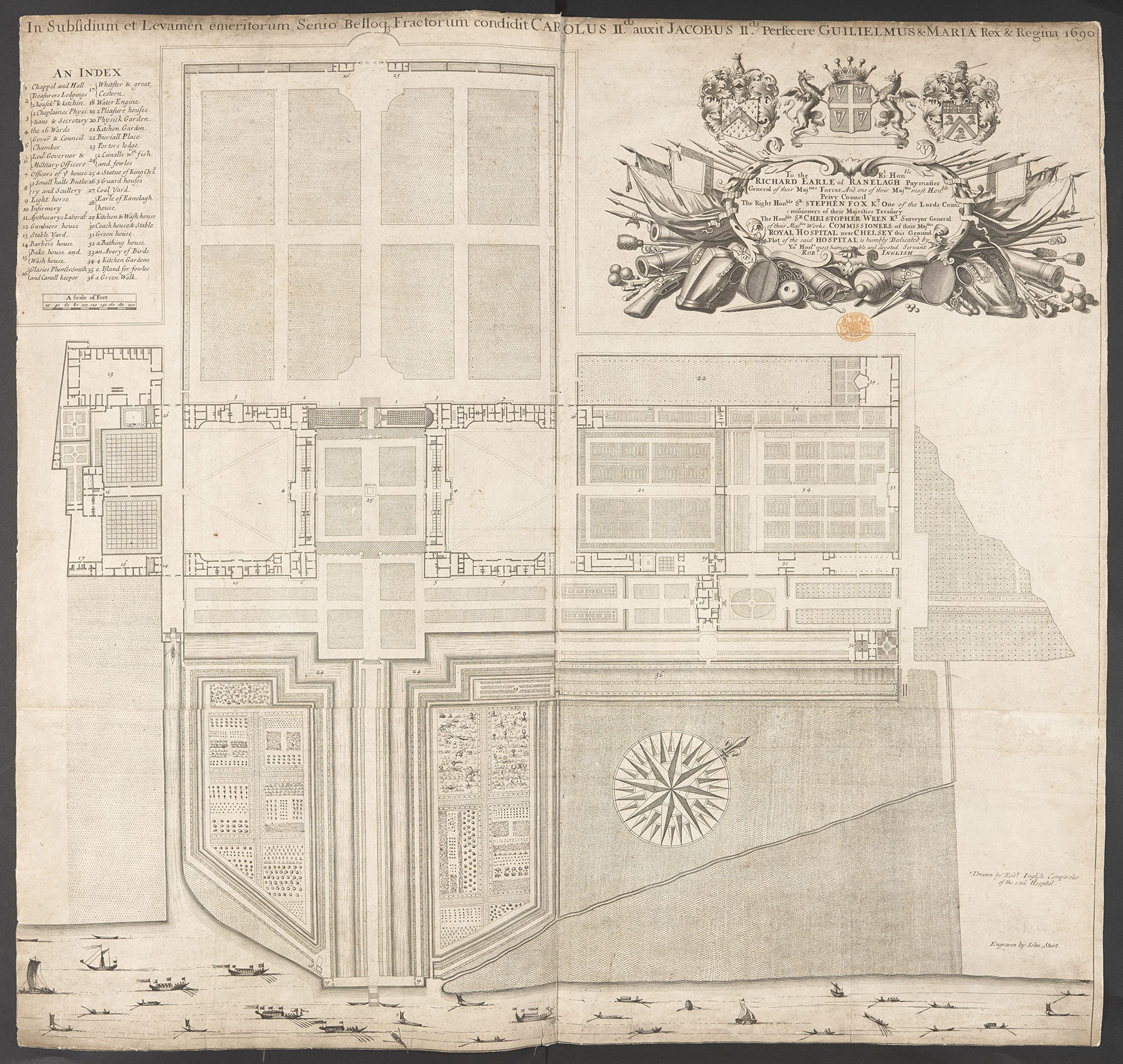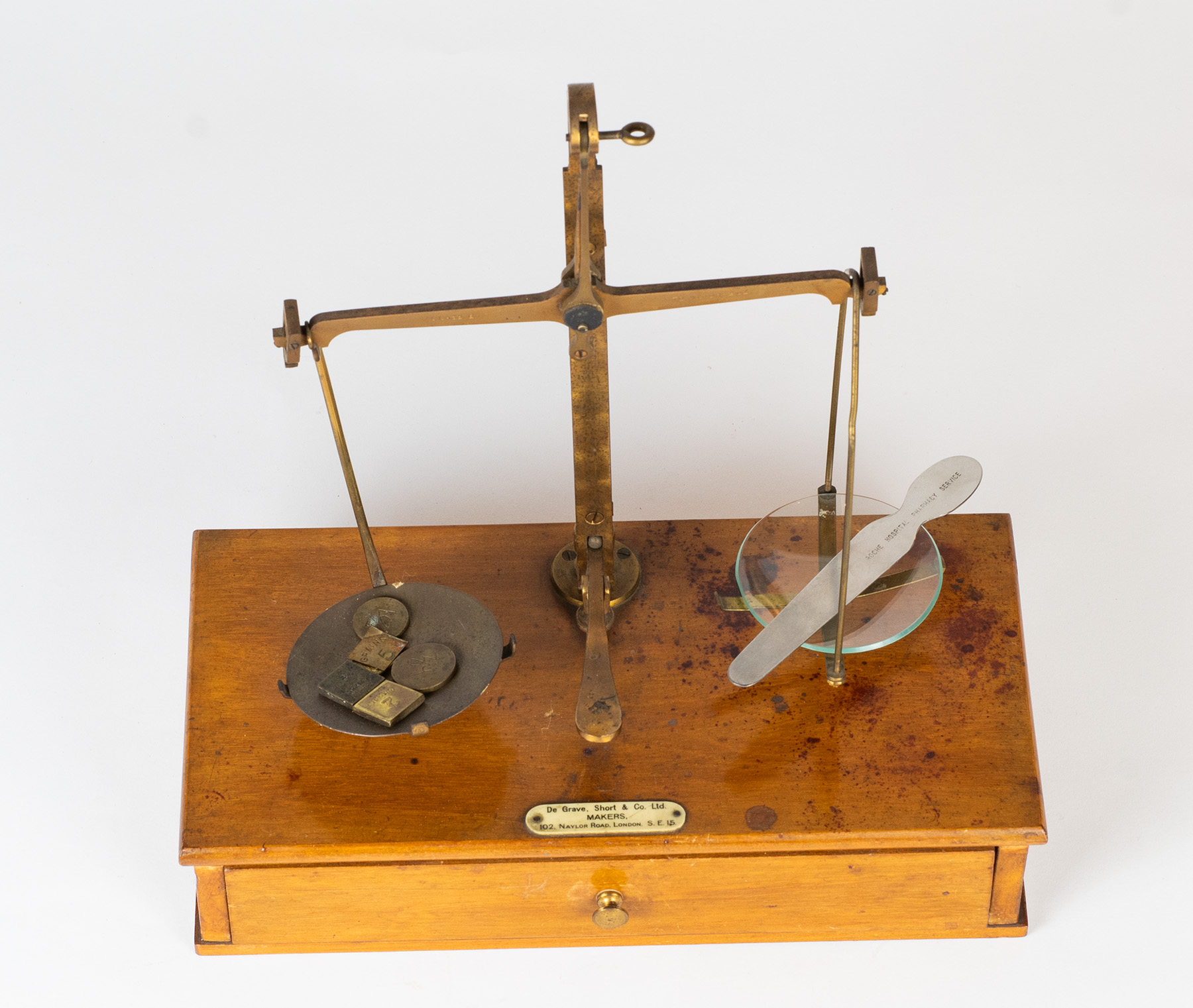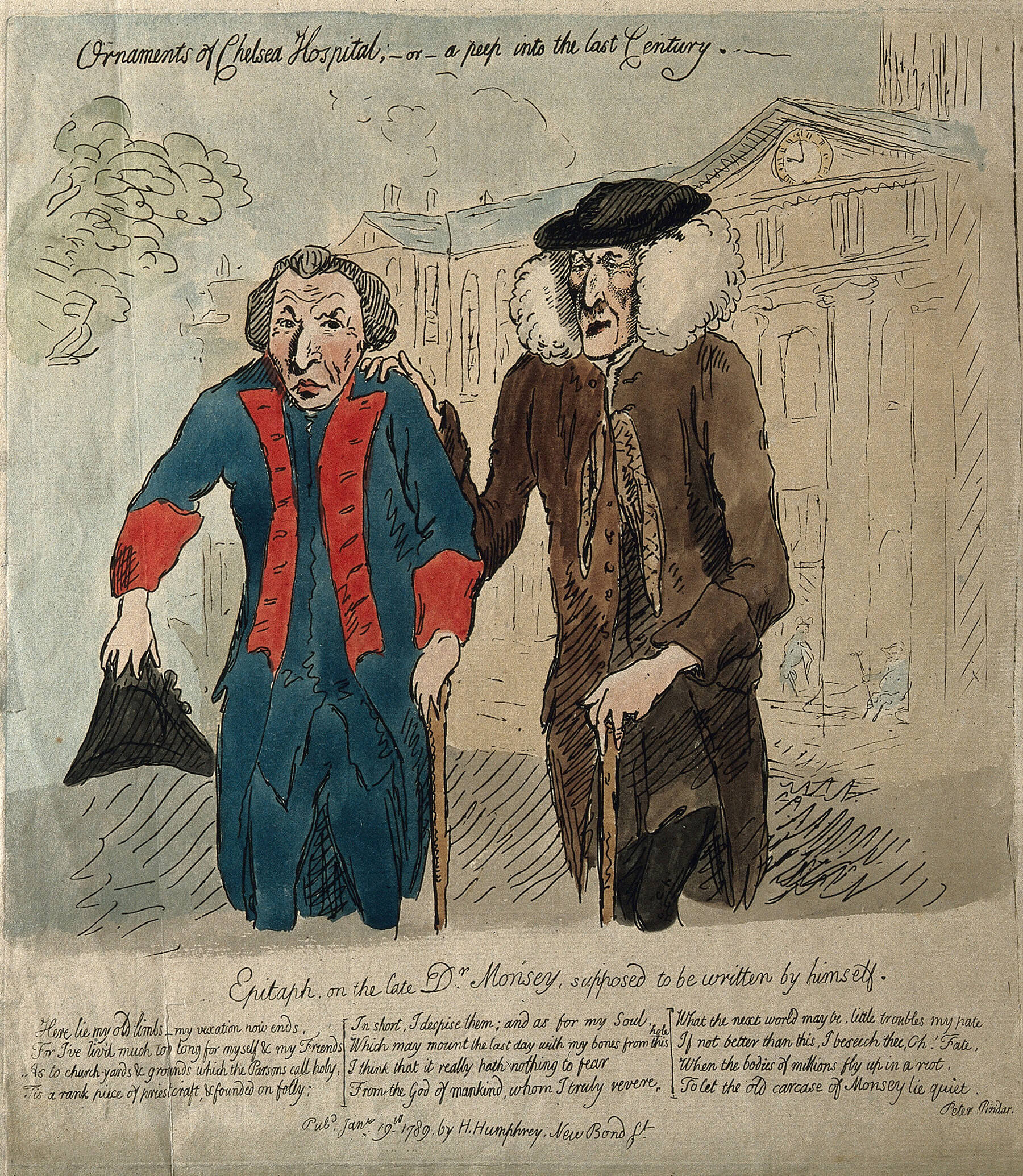The Apothecary’s remedies
Isaac Garnier, the first apothecary appointed at the Royal Hospital, made remedies in his Laboratory, and grew medicinal herbs in his physic garden, as was the practice of the time.

Other ingredients typically used by apothecaries sound shocking today. They included highly toxic mercury and arsenic; animal products such as blood, saliva, sweat and ‘turds of a goose [and] of a dog’. Unsurprisingly, even the best practitioners of the age could unwittingly poison their patients.
Garnier’s own exotically named remedies included ‘Cordiall Hypnotick Julop’, ‘Ointment of Mash Mallowes’ and ‘Tincture of Jesuits Powder’.

Abolition of the Hospital’s Apothecary
By the 18th century the use of medicines by the staff and Chelsea Pensioners had reached ‘astronomical proportions’. This benefited the Apothecary who was allowed to profit from the sale of his tinctures and remedies.
On the 5th August 1833, following a radical review of the running of the Hospital, a Royal Warrant was issued directing that all unnecessary offices were to be abolished as opportunity afforded. This included the Apothecary’s position which was eventually dissolved in 1846.
The laboratory was converted into lodgings for the Governor’s gardener in 1820 and was eventually demolished in the 1850s.
Monsey’s maverick methods
Dr Messenger Monsey was the Hospital’s Physician from 1742 until his death in 1788, aged 96. He was known in his lifetime for his eccentric medical practice.
His ‘black powder’ dentistry caused consternation among his patients. He’d tie catgut around an offending tooth and secure the other end to a pistol ball, before firing the pistol. In the absence of willing volunteers, he’d practice this speedy method of extraction on himself.

Under the knife
Many veterans who had survived their battlefield wounds had done so through the ordeal of amputation. Before general anaesthetic for surgery was introduced in the mid-1800s, operations were horrifically painful, with a high risk of death from infection.
Chelsea Pensioners with lower limb loss were provided with a basic wooden leg by the Royal Hospital. Jointed, lighter prosthetics, developed during the 19th century, were only affordable by the wealthy.